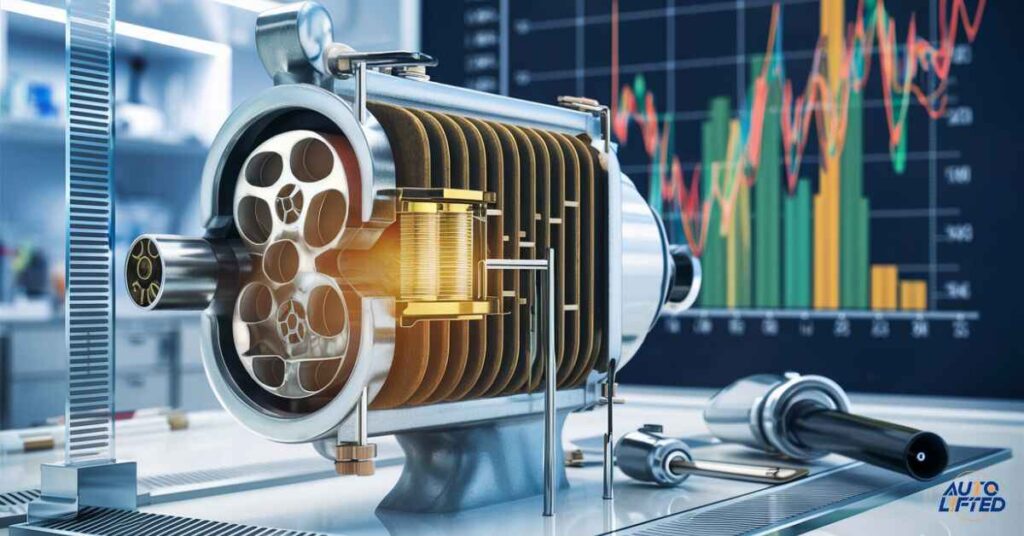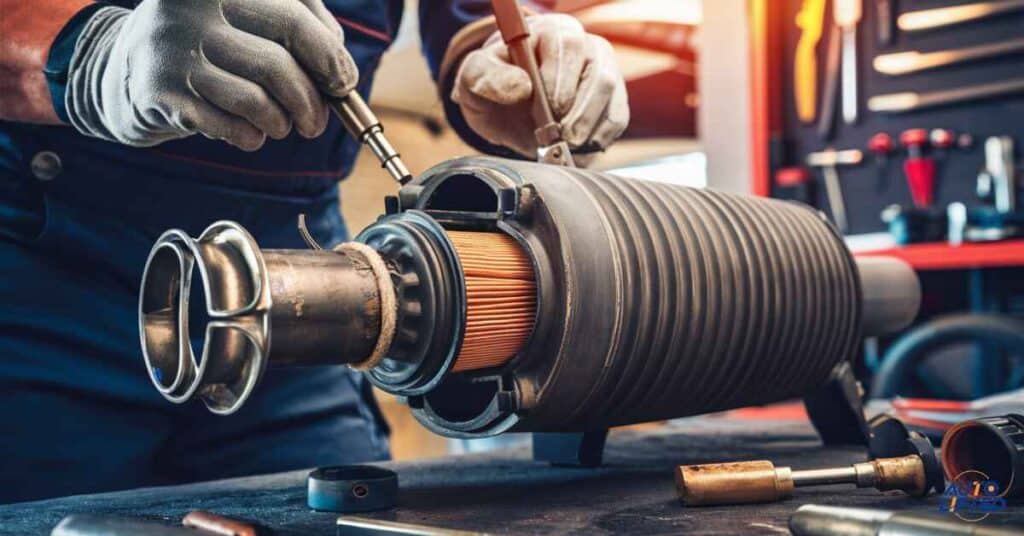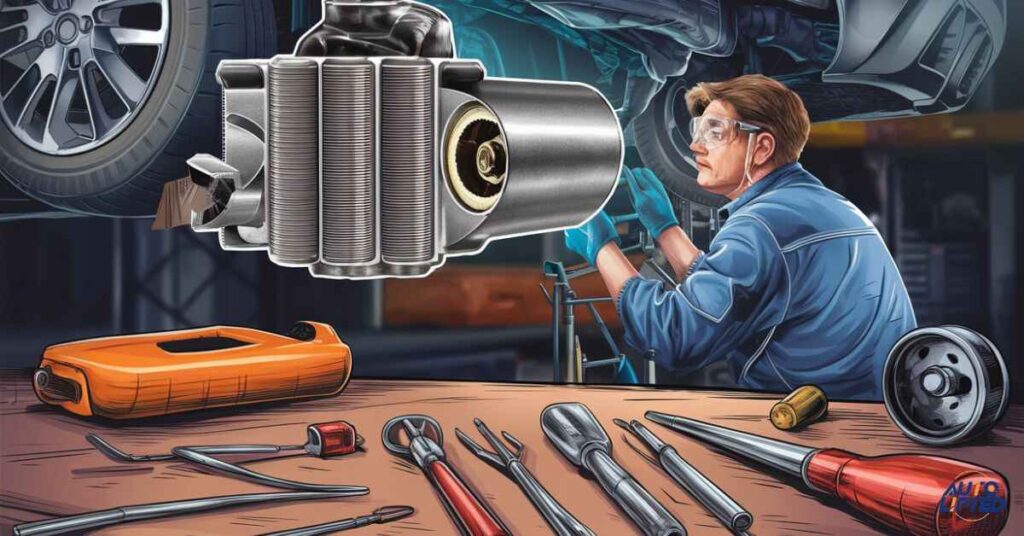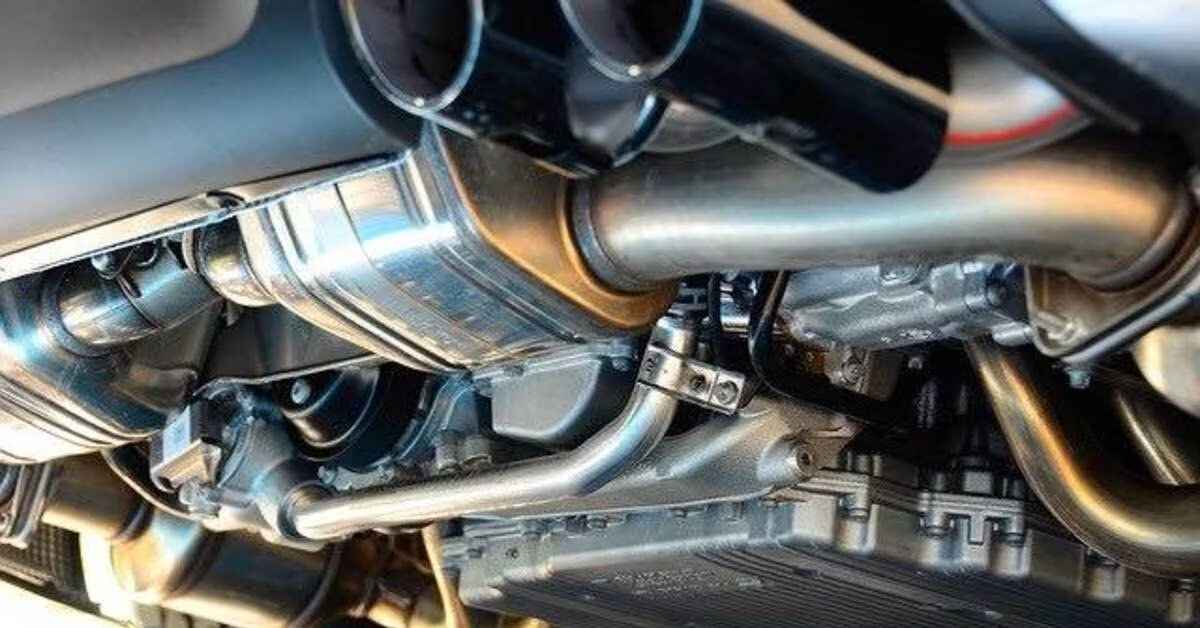Whether you are a seasoned driver or a new car owner. Understanding the role and importance of your vehicle’s catalytic converter is crucial. This essential component plays a vital part in reducing harmful emissions.
Protecting the environment, and ensuring your car’s compliance with legal regulations. In this comprehensive guide, we’ll dive deep into the world of catalytic converters, covering everything you need to know as a responsible car owner.
What is a Catalytic Converter and How Does it Work?

A catalytic converter is an emissions control device installed in your vehicle’s exhaust system. Its primary function is to convert harmful gases produced during the combustion process into less harmful substances before they are released into the atmosphere.
The catalytic converter achieves this through a chemical reaction facilitated by precious metal catalysts, typically platinum, palladium, and rhodium. These metals are coated onto a honeycomb-like structure made of ceramic or stainless steel.
As the hot exhaust gases from your engine pass through this honeycomb structure, the precious metal catalysts trigger a series of chemical reactions that convert.
- Carbon Monoxide (CO) into Carbon Dioxide (CO2)
- Hydrocarbons (HC) into Carbon Dioxide (CO2) and Water (H2O)
- Nitrogen Oxides (NOx) into Nitrogen (N2) and Oxygen (O2)
This process significantly reduces the levels of these pollutants in your vehicle’s exhaust, making it more environmentally friendly and compliant with emission standards.
The Importance of a Properly Functioning Catalytic Converter

Maintaining a properly functioning catalytic converter is crucial for several reasons:
- Environmental Protection: By reducing the emission of harmful gases, catalytic converters play a vital role in improving air quality and mitigating the negative impacts of vehicle emissions on the environment.
- Legal Compliance: In many regions, including the USA and UK, vehicles are required to meet specific emission standards. A faulty catalytic converter can cause your vehicle to fail emissions tests, potentially resulting in fines or legal consequences.
- Improved Fuel Efficiency: A well-maintained catalytic converter can contribute to better fuel efficiency by optimizing the combustion process and reducing the buildup of contaminants in your engine.
Signs Your Catalytic Converter Needs Attention
While catalytic converters are designed to last the lifetime of your vehicle, they can still experience issues or failure over time. Here are some common signs that your catalytic converter may need attention:
- Poor Engine Performance/Acceleration: A clogged or damaged catalytic converter can restrict exhaust flow, leading to reduced engine power and acceleration.
- Rattling Noises from the Exhaust: Internal damage to the honeycomb structure can cause rattling or knocking sounds from the exhaust system.
- Glowing Red Hot Converter: If you notice your catalytic converter glowing red hot, it could indicate an internal meltdown due to excessive temperatures, requiring immediate attention.
- Failed Emissions Test: A faulty catalytic converter is often the culprit for failed emissions tests, as it cannot effectively convert pollutants.
- Check Engine Light: In some cases, your vehicle’s on-board diagnostics system may detect a problem with the catalytic converter and trigger the check engine light.
- Rotten Egg Smell: A strong, unpleasant rotten egg smell from the exhaust can signify a buildup of sulfur compounds, potentially caused by a failing catalytic converter.
When to Replace vs. Repair
If you notice any of the above signs, it’s essential to have your vehicle inspected by a qualified mechanic. In some cases, a catalytic converter may be repairable, such as clearing blockages or addressing upstream issues causing contamination.
However, in many instances, a complete replacement may be necessary, especially if the catalytic converter is physically damaged or has reached the end of its lifespan. Continuing to drive with a completely failed catalytic converter can lead to further damage and increased emissions, making replacement the safer and more responsible choice.
The decision to replace or repair will depend on factors such as the extent of the damage, the cost of the repair versus replacement, and the overall age and value of your vehicle.
Catalytic Converter Theft – A Growing Concern

Unfortunately, catalytic converter theft has become a widespread issue in recent years, primarily due to the precious metals contained within these components. Thieves target vehicles, often cutting off the catalytic converter from the exhaust system to sell for scrap.
This type of theft not only deprives you of a crucial emissions control device but can also cause significant damage to your vehicle’s exhaust system, leading to costly repairs. To help prevent catalytic converter theft, consider the following precautions:
- Defensive Parking: Park in well-lit areas, close to building entrances, or in secure parking facilities whenever possible.
- Security Devices: Install catalytic converter locks, shields, or engrave your vehicle’s information onto the converter to deter theft and aid in recovery.
- Awareness: Be vigilant and report any suspicious activity around your vehicle to the proper authorities.
Proper Catalytic Converter Maintenance

Proper maintenance is key to ensuring the longevity and optimal performance of your catalytic converter. Here are some tips to help maintain your catalytic converter:
- Regular Tune-ups and Emissions System Maintenance: Follow your vehicle’s recommended maintenance schedule for tune-ups, emissions system inspections, and repairs.
- Use Quality Fuel and Avoid Contaminants: Using low-quality fuel or allowing contaminants like coolant or engine oil to enter the exhaust system can damage the catalytic converter.
- Avoid Excessive Idling or “Revving”: Excessive idling or revving the engine can overheat the catalytic converter, leading to premature failure.
- Promptly Address Issues: If you notice any signs of catalytic converter problems, have them diagnosed and repaired promptly to prevent further damage.
Costs of Catalytic Converter Replacement

Unfortunately, replacing a catalytic converter can be an expensive repair, with costs varying depending on your vehicle’s make, model, and specific converter requirements. Here’s a general breakdown of what you can expect to pay:
- Passenger Cars: Typically ranging from $800 to $2,000 for the converter and labor costs.
- SUVs and Trucks: Due to larger converters, costs can range from $1,200 to $3,000 or more.
- Luxury/High-Performance Vehicles: These vehicles often require specialized catalytic converters, potentially costing $3,000 or more for the entire replacement.
It’s important to note that while aftermarket catalytic converters may be less expensive, opting for an OEM (Original Equipment Manufacturer) replacement can ensure better compatibility and longevity.
Frequently Asked Question
What do you need to know about catalytic converters?
Catalytic converters reduce harmful emissions from your car’s exhaust by converting toxic gases into less harmful substances. They are a critical component for meeting environmental regulations and ensuring your vehicle operates efficiently.
How do I know what catalytic converter I need?
To determine the right catalytic converter, check your vehicle’s make, model, year, and engine size, and ensure it meets the specific emissions standards (such as EPA or CARB) required for your region.
What 3 things does a catalytic converter do?
A catalytic converter reduces harmful emissions by converting carbon monoxide to carbon dioxide, hydrocarbons to water and carbon dioxide, and nitrogen oxides to nitrogen and oxygen.
Will my car run better without catalytic converter?
While removing a catalytic converter might slightly increase performance, it is illegal in many areas and will significantly increase your vehicle’s emissions, potentially causing environmental harm and failing emissions tests.
How long do catalytic converters last?
Catalytic converters typically last about 70,000 to 100,000 miles but can last longer with proper maintenance and depending on driving conditions.
What are the signs of a bad catalytic converter?
Signs of a bad catalytic converter include a decrease in engine performance, poor fuel economy, the check engine light turning on, and a sulfur or rotten egg smell from the exhaust.
Conclusion
As a car owner, understanding the significance of your catalytic converter and its role in reducing emissions is crucial. By following proper maintenance practices, addressing issues promptly, and being vigilant against theft. You can ensure your catalytic converter functions optimally, protecting the environment and keeping your vehicle compliant with legal regulations.
If you suspect any issues with your catalytic converter or have questions about its maintenance or replacement. Do not hesitate to consult with a qualified mechanic or automotive specialist. Prioritizing the health of this essential component will not only benefit the environment but also contribute to the overall performance and longevity of your vehicle.
Remember, taking care of your catalytic converter is an investment in cleaner air and a more responsible approach to vehicle ownership. Share this guide with fellow car enthusiasts to spread awareness about the importance of catalytic converters and promote a greener, more sustainable future on our roads.
